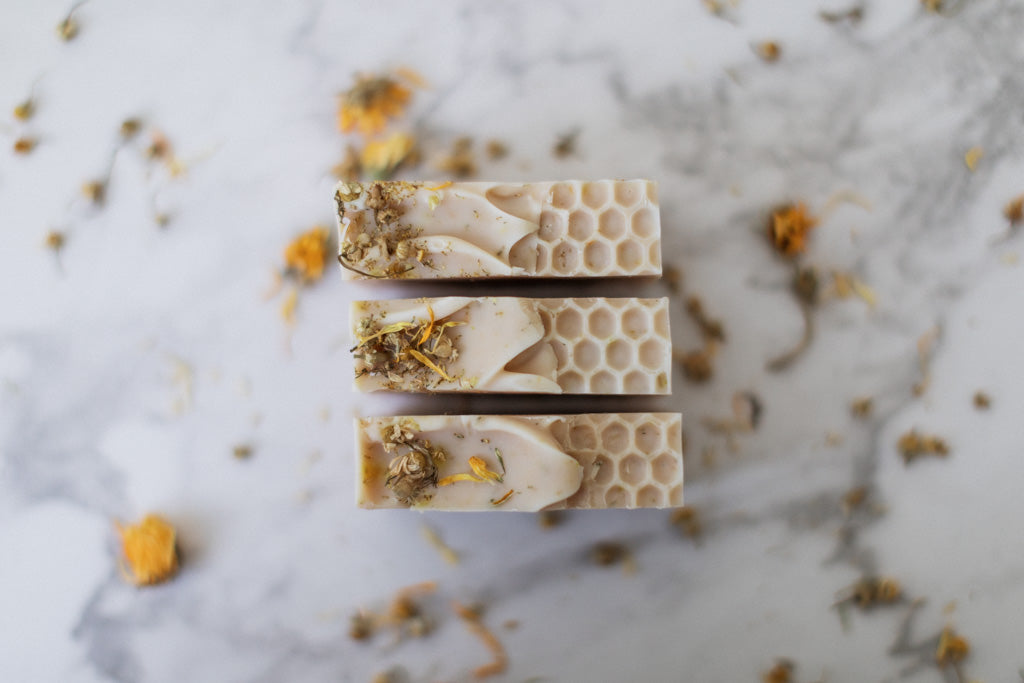
Superfatting in soap making: Why it matters and why handmade soap is in a league of its own
Share
If you have ever wondered why handmade soap feels richer, creamier and far more nourishing than supermarket bars, the secret often comes down to one thing. Superfatting.
It is one of the most beautiful parts of traditional soap making. A simple concept that transforms a basic bar into a gentle skincare treat. Yet most customers have never heard of it, and many commercial brands never use it.
So let’s dive into what superfatting really is, why it is considered the heart of handmade soap, how it affects the final bar and why it sets natural soap apart from industrial and so called triple milled soaps.
What is superfatting
Superfatting means leaving a certain percentage of oils unsaponified in the final soap bar. These are the oils that do not mix with the lye and remain free within the bar to nourish the skin.
In simple terms, superfatting is the act of adding more oils than the lye can turn into soap. The result is a bar that is gentler and more moisturising.
Handmade soap makers carefully calculate this percentage during formulation. It is not random and it is not guesswork. It is chemistry with intention.
Why superfatting is so important in handmade soap
Superfatting changes everything about a bar. It affects the feel, the lather, the softness of the skin afterwards, the longevity and even the scent.
Here is what those extra oils do:
Reduce cleansing harshness
Soap without superfat can be extremely cleansing. It often strips away too much oil from the skin, which is why many people feel tight or dry after using cheap commercial bars.
Superfat adds a cushion. It reduces the stripping effect and leaves the skin comfortable and balanced.
Add natural moisture
Because the extra oils remain untouched by the chemical reaction, they sit inside the bar until your skin meets them. This creates a naturally nourishing wash without synthetic moisturisers.
Improve glide and creaminess
A well superfatted soap gives that gorgeous creamy, velvety feel that handmade soap is known for.
Protect sensitive skin
For people with dry, sensitive, mature or eczema-prone skin, superfatted soap is often a game changer.
Typical superfat levels and what they mean
Different soap makers choose different levels depending on the oils they use, their design goals and the skin feel they want to achieve.
Here is what each level typically offers.
0 percent
This level means all the oils are fully converted into soap. How the bar feels depends entirely on the oils used. A recipe rich in gentle, conditioning oils such as olive, rice bran or sweet almond will still feel mild and moisturising even at zero percent, while a bar high in coconut or palm kernel will feel much more cleansing. Zero percent is often chosen for functional bars like laundry or dish soap, but it can be suitable for skin if the formula relies on naturally conditioning oils.
2 to 3 percent
Low conditioning. This adds a small buffer of unsaponified oils that soften the cleansing effect without making the bar feel oily. The overall feel still depends on the recipe, but this range is often used for formulas designed to be firm, long lasting and slightly more cleansing. It can work well for oily skin types or for bars intended for hands and frequent washing.
3 to 5 percent
Balanced and mild. This level is ideal for everyday use and offers a pleasant mix between cleansing and conditioning. When paired with a thoughtful blend of hard and soft oils, the result is a bar that lathers beautifully, feels comfortable on the skin and suits most people. Makers often choose this range for their signature formulas.
5 to 8 percent
This range creates beautifully nourishing, creamy and gentle bars while still maintaining structure and durability. The extra oils left in the soap add a soft, moisturising feel without making the bar mushy, as long as the recipe has a balanced blend of hard and soft oils.
This is the level we use at Chalke Valley Soaps, usually between 5 and 8 percent depending on the recipe. With careful water control, the right curing environment and thoughtfully chosen ingredients, our bars stay firm, long lasting and naturally luxurious while still offering a rich, moisturising experience.
10 percent and higher
Very conditioning. This level is used when an exceptionally gentle bar is needed, such as for shaving, baby skin or certain treatment soaps. The feel is silky and soft, although bars made at this level may be less firm and can have a shorter shelf life. The overall result still depends on the oils used, but higher superfats require more formulation experience to get the hardness and longevity right.
Does more superfat mean more luxury?
This is one of the biggest myths in natural soap making. More superfat does not always mean a better soap. It can actually cause problems.
Too much superfat may lead to
- A softer, mushy bar
- Reduced lather
- Shorter shelf life
- Oil seepage
- Faster spoilage, especially with high PUFA oils
Handmade luxury is not about piling on extra oils. It is about balance and technique.
The truth about industrial soap and triple milled soap
Most commercial soaps are nothing like real handmade soap.
Industrial soaps usually contain
- No superfat
- Synthetic detergents
- Hardening agents
- Fillers
- Artificial fragrances
They strip the skin rather than nourish it. Many are technically not even true soap but syndet bars.
Triple milled soaps
Triple milling sounds luxurious, but it simply presses out moisture and oils to create a hard, long lasting bar. Any natural goodness, including superfat, is removed or destroyed in the process.
Triple milled soaps are smooth and pretty with forever lasting shelf life, but they are not the pinnacle of skincare. They are simply the pinnacle of durability. That does not mean they are gentle.
Handmade cold process soap, formulated with a thoughtful superfat, is far superior for the skin.
How superfatting affects hardness, shelf life and bar performance
Superfatting touches every part of the bar. Here is how.
Hardness
A properly superfatted bar can still be very hard. At Chalke Valley Soaps, we achieve this through:
- Balanced fatty acid profiles
- Water control
- Intentional gelling
- Full curing time
- Avoiding high PUFA oils in large amounts
Shelf life
Higher superfat means more free oils, which can eventually go rancid. This can be controlled naturally with:
- Stable oils
- Correct storage
- Lower PUFA content
- Antioxidants
Lather
Superfat affects lather too. Too little allowes big, fast bubbles but can feel drying. Too much can collapse the lather.
Balance is everything.
Why superfatting is the heart of handmade soap
Superfatting is one of the quiet strengths of handmade soap, something you will never find in a typical mass produced bar. It is a small decision that changes the entire experience of washing your skin. Instead of creating a bar that strips everything away, superfatting allows a soap maker to craft something kinder, richer and far more in tune with how your skin naturally behaves.
When a bar contains a touch of extra oil, it does more than moisturise. It softens the cleanse, makes the lather more velvety and leaves behind a comfortable finish that feels like your skin has been cared for rather than scrubbed bare. Even people who have never tried handmade soap often notice the difference straight away. It is less squeaky, more creamy, and it feels like skincare rather than simple washing.
What makes this truly special is the intention behind it. Superfatting is not done for efficiency or mass production. It is done for you. A handmade bar is crafted in small batches, with the specific skin feel in mind, and superfatting becomes the maker’s signature. Some want a silky glide, others a light cushiony feel, others a nourishing finish that lingers. These qualities come from thoughtful superfatting, not from anything that can be mass produced on industrial machinery.
This is also why handmade soap has a natural charm that commercial bars cannot imitate. Commercial soap is designed to survive warehouses, heat, cold, shipping, storage and retail shelving. Every decision is optimised for durability and cost efficiency. Handmade soap is designed for your skin. That alone puts it in a different category.
So when you choose a bar made with superfat, you are choosing something crafted with purpose. You are choosing a bar that still contains all its natural goodness, designed to make your skin feel comfortable and nourished. It is one of the reasons handmade soap becomes so addictive. Once you feel the difference, it is very hard to go back.
At Chalke Valley Soaps we treat superfatting as an art. We keep our levels around 5 percent, always aiming for that perfect balance between richness, lather and durability. Our bars stay firm and long lasting, but never lose that creamy, comforting touch that handmade soap is known for. It is this balance that has made so many customers switch entirely to natural soap and never look back.
Superfatting is not just a technique. It is the heart of handmade soap. It is the reason a natural bar feels alive, generous and full of character. And once you understand it, you understand why handmade soap is worth choosing every single time.
How we do it at Chalke Valley Soaps
We use 5 to 8 percent superfat depending on the recipe. This gives us:
- Excellent hardness
- Creamy lather
- Deeply nourishing skin feel
- Long shelf life
- Beautiful performance with essential oils
We combine this with:
- Water reduction
- Full gel phase
- Mindful ingredient selection
- Natural additives
- A full 6 to 8 week cure
Every step is intentional.
Want to learn how to do this professionally
If you enjoyed this article, you will love our amazing Botanical Soap Making Course.
It teaches:
- Superfatting
- Water discounting
- Hardness optimisation
- Gel phase mastery
- Natural additives
- Essential oil blending
- Professional formulation
- Small to large scale
- Covering absolute beginners to advanced levels
- And so much more
View the full curriculum here.
All along the way, you'll get step by step mentoring, with support directly from me.
Hope to see you soon inside!
Hugs & bubbles,











